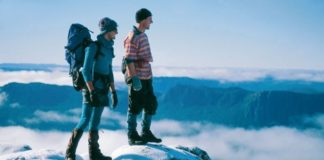The Three Capes Track in Tasmania is a multi-day walk on the Tasman Peninsula. It has 46 kilometres of world-class coastal hiking and three public huts. The four-day walk starts with a boat trip from Port Arthur to Denmans Cove in Tasman National Park and will take you via Cape Pillar and Cape Hauy to the end of the track at Fortescue Bay.
The Three Capes Track takes you to two of the three eponymous capes: Cape Pillar and Cape Hauy. You can see the third cape, Cape Raoul, throughout the first walking day and from the first hut, and walk to it separately as a day walk.
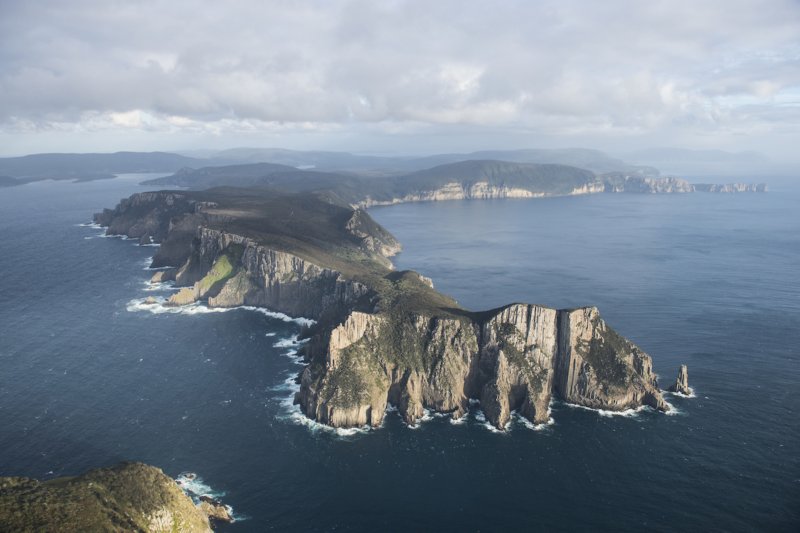
So far, building the Three Capes Track has cost the Tasmanian and federal governments $25.3 million, making it Parks & Wildlife’s biggest and most ambitious track project yet.
When the third and final stage of the project is done, the Three Capes Track will have five public huts and walkers will be able to spend six days walking 82 kilometres from White Beach, near Nubeena, to Fortescue Bay via Cape Raoul (near Shipstern Bluff, the infamous big-wave surfing spot), Cape Pillar and Cape Hauy.
Contents
Three Capes Track Highlights
Cape Hauy to Fortescue Bay
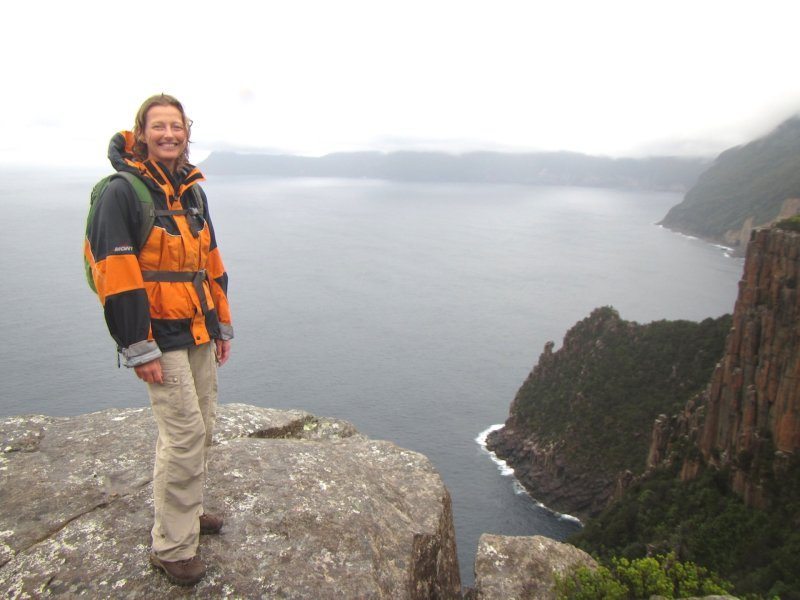
It’s a misty morning when I lace up my hiking boots and set off from Fortescue Bay near Port Arthur, an hour’s drive south-east of Hobart airport.
Penguins come ashore at dusk here, sometimes there are seals on the white-sand beach too, but I haven’t come to watch wildlife.
I’m here with Ashley Rushton from Tasmania Parks & Wildlife Service to experience part of the Three Capes Track, a day-walk to Cape Hauy.
This walking trail is an ideal sample of the Three Capes Track because the upgrade of this 4.7-kilometre (9-kilometre return) trail in 2012 was the first stage of the three-part Three Capes Track project.
Four days or six, one thing is certain, if today’s day-walk is any indication: the Three Capes Track is spectacularly coastal.
After walking a short way, and seeing wallaby hop into the bush ahead of us, Ashley and I take a quick detour onto the Mt Fortescue track.
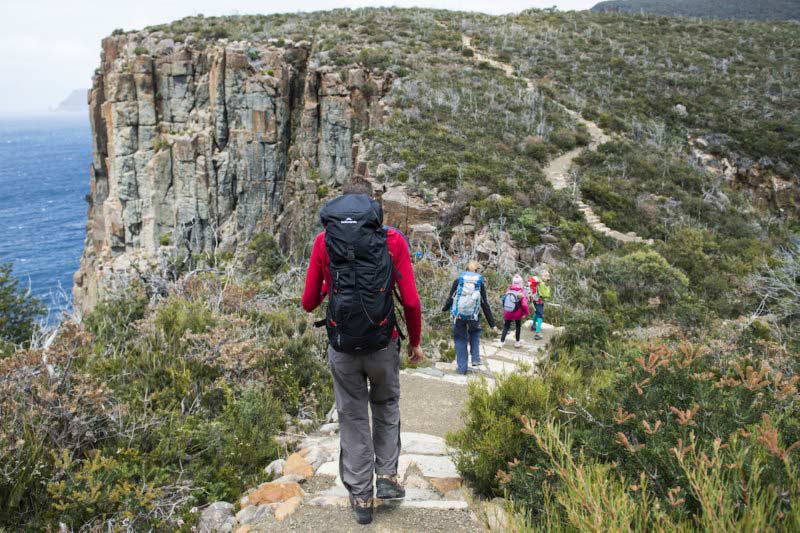
This section of the Three Capes Track hugs the Tasman Peninsula’s 300m sea cliffs, the highest in the southern hemisphere.
Every few metres you can step to the side and find yourself on the edge of a precipice getting a sea eagle’s view of fishing boats, soaring albatross and sheer dolerite columns rising straight up out of the sea.
Back on the main trail, two more thoughts strike me: the track is magnificently crafted, a snaking mosaic of stone paths, bridges and retaining walls, with the occasional boardwalk, all built to last; and it’s remarkably mud-free, considering how much rain Tasmania gets.
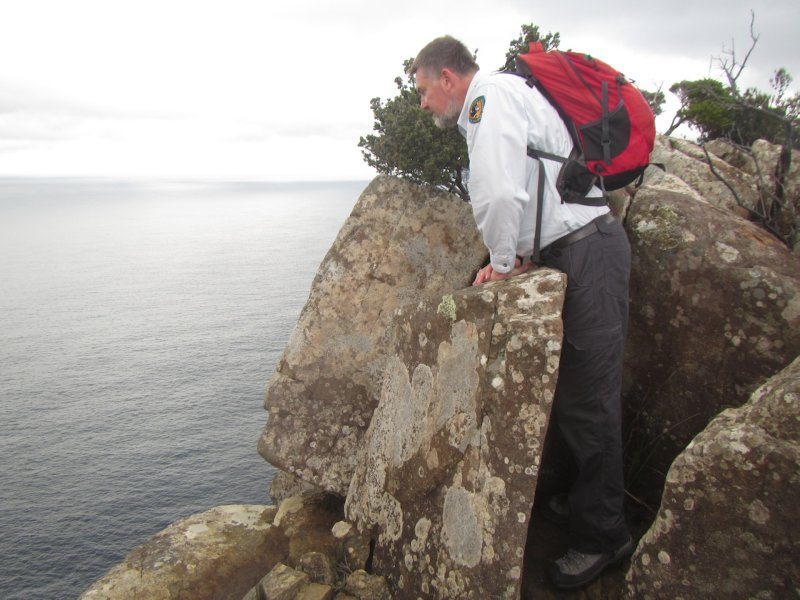
“The entire walk is designed to be an all-weather, dry-boot experience that can be tackled all year round,” Ashley tells me.
It’s also relatively flat; the highest point, Mt Fortescue, is a mere 450m above sea level.
Having said that, the track to the end of Cape Hauy has a few ups and downs.
But even they’re not as arduous as they could be, thanks to the stone steps that make ideal spots to stop and look around – at the steel-grey sea, offshore outcrops and Tasman Island, off the end of Cape Pillar, to our right.
“Every step is a lookout,” says Ashley.
Best of all, there’s no one else around. (We see only five other people all day.)
Cape Hauy
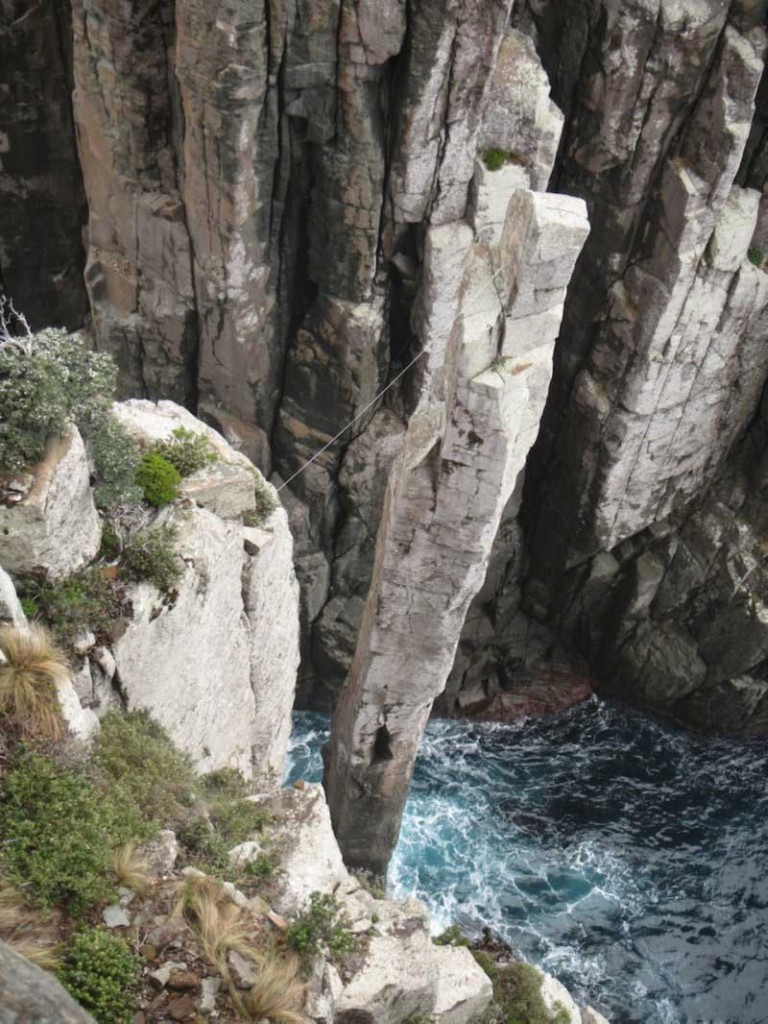
When we reach Cape Hauy itself, the track peters out in a jumble of boulders, allowing Ashley to demonstrate one of the most innovative features of the Three Capes Track.
Instead of fences and barriers at exposed cliff edges, there’ll be natural bulwarks made of waist-high rocks that walkers can stand behind for views – minus the danger of falling or being blown into oblivion.
The vertical views really are something.
I crouch near the edge of one flat rock to peer over the edge at two slender sea stacks, both legendary climbing crags: the Candlestick and the Totem Pole, which is connected to the cliffs below by a horizontal rope, the only way to reach it.
To reach the Candlestick, climbers have to brave the icy, sapphire-blue water to swim to a ledge at its base. Brrr.
Three Capes Track Huts
Which brings me to one of the most exciting aspects of the walk: the huts.
The Tree Capes Track was the first hut-based independent (i.e. self-guided) walk in Australia to provide mattresses and cooking facilities.
With no need to carry tents, sleeping mats or stoves, walkers will have lighter packs.
Instead of a single hut building at each location, each passive-solar hut has sleeping modules (to accommodate 48 people) linked by timber decking to toilets, cooking areas and communal spaces.
There are eco-friendly heaters, rainwater tanks and, bless the hut-architects, solar hot showers.
Back at Fortescue Bay at the end of our Cape Hauy walk, I feel as refreshed as if I’d been away for a weekend.
Bring on the final stage, when we can all return to spend days walking Tasmania’s wild and wonderful south-east coast.
Three Capes Track itinerary
(4 days/3 nights – 48km – Grade is Easy to Moderate)
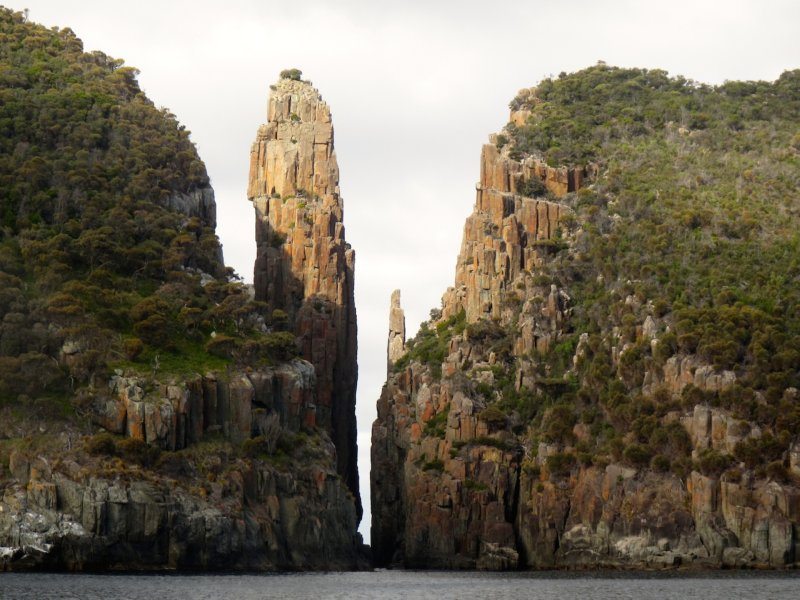
Three Capes Track Day 1
4km (2 hours)
Port Arthur to Denman Point
- Cruise with Pennicott Wilderness Journeys to the track start.
- See whales, dolphins or fur seals.
Denman Point to Surveyor’s Cabin
- Hike through Eucalypt woodlands and coastal heath
- Views of Cape Raoul from Surveyor’s Cabin
- Night in Surveyor’s Cabin
Three Capes Track Day 2
11km (4.5 hours)
Surveyor’s Cabin to Munro Cabin
- Hike through more Eucalypt forests, heathlands and moorlands.
- Climb Arthur’s Peak for stunning views across Crescent Bay and to Cape Raoul
- Cross Ellarwey Valley
- Night in Munro Cabin
Three Capes Track Day 3
19km (6 hours)
Munro Cabin to Retakunna Cabin
- Leave your main pack at Munro Cabin and hike to Cape Pillar with a daypack
- Stunning views of Tasman Island from Cape Pillar
- Walk through forest and heathland
- Night in Retakunna Cabin
Three Capes Track Day 4
14km (7 hours)
Retakunna Cabin to Fortescue Bay
- Climb Mount Fortescue to the tip of Cape Hauy
- Amazing views of the Totem Pole and dolerite columns
- Swim in Fortescue Bay
- Bus transfer to Port Arthur
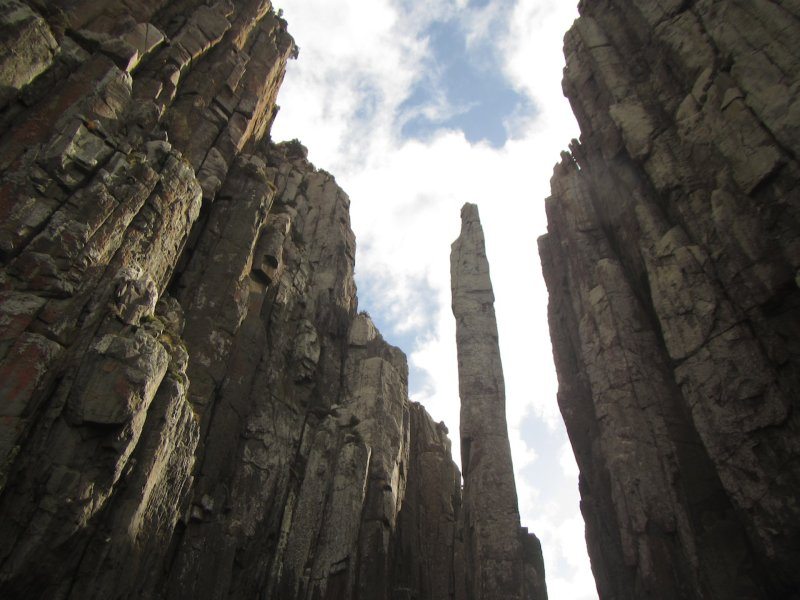
How to book the Three Capes Track
The Three Capes Track website has a booking page and more information. For shorter walks, ranging from a few minutes to a full day, check out Tasmania Parks & Wildlife Service’s new 60 Great Short Walks in Tasmania iPhone app.
Three Capes Walk
A private walking company, the Tasmanian Walking Company, offers luxury guided walks with private lodge accommodation (similar to those run by Cradle Mountain Huts Walk on the Overland Track).
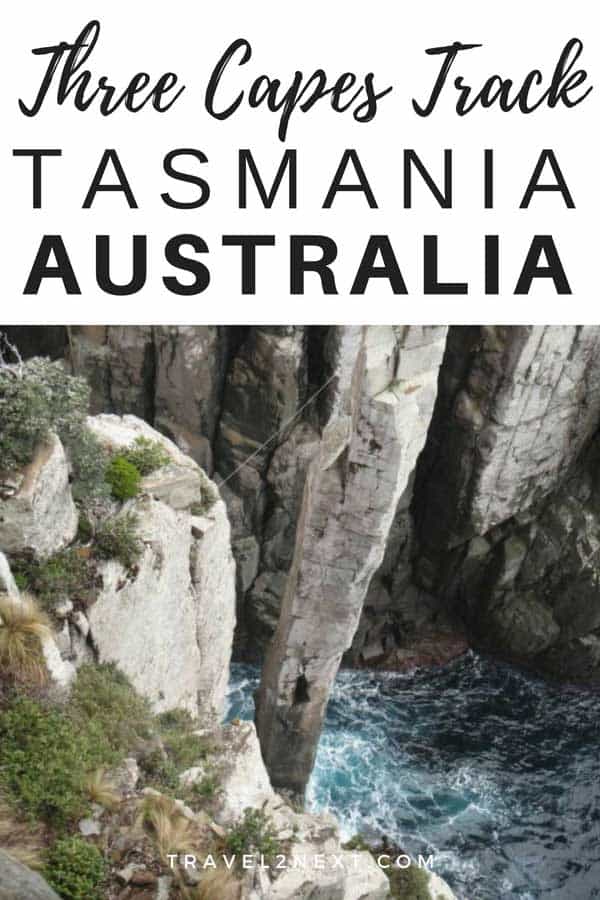
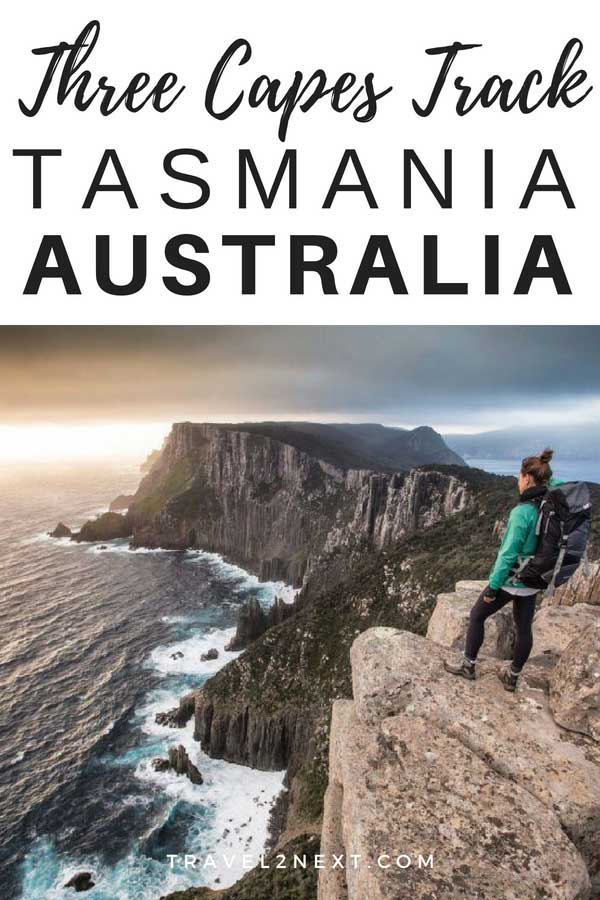
Plan Your Trip

Rent A Car – Find the best car rental rates at Discover Cars. They compare car hire companies to provide you with the best deal right now.

Find A Hotel – If you’re curious about this article and are looking for somewhere to stay, take a look at these amazing hotels.
